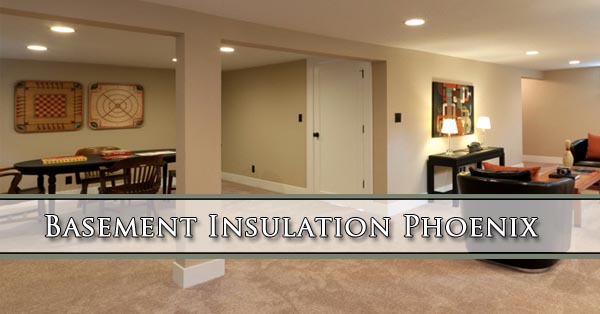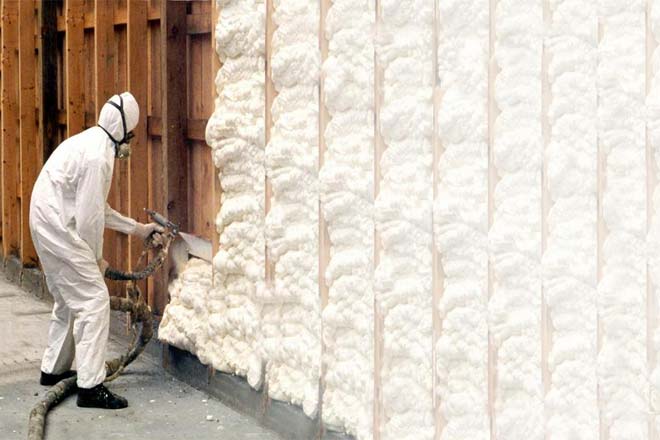The Roof is usually the focus of home insulation projects. But with more and more Arizona residents finishing their basements and using them as part of the livable space, it is necessary and cost effective to insulate our basements. They need to be dry and air conditioned to be comfortable and clean spaces. Dry basements and crawlspaces are less likely to end up with termites or other pests. Even if the basement is being used solely for storage it needs to be kept dry to avoid dust mites and mold.
Insulating Basement Walls
The walls of your basement need to be insulated with insulation that isn’t sensitive to water. The insulation needs to create a barrier between the interior air and the cold basement walls. If the warmer air inside our basements is allowed to come into contact with the cooler concrete it will create condensation. Condensation can lead to mold developing, and some molds carry with them dangerous airborne spores that can cause respiratory conditions. The concrete elements that are below the ground are always in contact with the soil around your home. This makes them cold all year long, especially if there isn’t any insulation around the foundation of your home.
Spray Foam insulation is the best choice for basement insulation. The type of spray form that is used should be somewhat vapor permeable. The higher the value of vapor permeability the lower risk you will have excessive moisture in your basement walls.
Different types of insulation have different levels of vapor permeability. For example 10 inches of open cell spray foam will allow as much drying as 2 inches of unfaced extruded polystyrene. 4 inches of unfaced expanded polystyrene allows the same vapor permeability as 3 inches of closed call spray foam insulation. Depending on your budget and needs find out exactly how much you will need to ensure the basement walls will be insulated but will still dry properly.
Insulating Basement Ceiling
We all know that heat rises, but we often forget that it also expands to cooler areas through conduction and radiation. If the basement isn’t used or conditioned not having insulation in the basement ceiling could be costing you on your energy bills. This is from the heated or cooled air in the living space getting through the floor of the home into the unused basement.
If the basement is used or indirectly heated by a water heater, heating system, or other heat producing appliance it needs to be properly insulated at the walls. Insulating the ceiling of basements that are dedicated living space is unnecessary and counterproductive as the basement temperature should be close to the temperature of the upper floors of the house.
Insulating Basement Floors
If you are designing your own home you can choose to have the basement floor insulated by having insulation under the foundation itself. Rigid insulation underneath the basement floor slab is the best way to insulation the basement floor. While the savings isn’t as significant as insulating basement walls, it is enough to keep the basement drier, and significantly more comfortable. A polyethylene sheet acts as a vapor barrier and should be located over the rigid insulation and in direct contact with the bottom of the concrete slab.
If you are just finishing your basement or improving the comfort and insulation you can install insulation over the concrete slab. First you need to check to make sure you have any water or moisture damage. Installing insulation or an improved floor with water or moisture problems will do nothing but encourage mold growth. After you have ensured there are no water issues you can install a subfloor. This step makes room to install the insulation. Popular insulation flooring options include foam board, fiberglass, and modular flooring systems.
Crawlspace Insulation
Crawlspaces are like tiny basements under sections of some homes. They allow room for repair people like plumbers to perform repairs without having to tear up the floor. Crawlspaces are generally vented to the outside which means that you will have to fight the cold and the heat from getting into your home with insulation. It is best to insulate the crawlspace from below the floor, inside the crawlspace. Any pipes or vents in this area should also be insulated and sealed up.
Basement Insulation Installation
Barrier insulation is a whole home insulation company serving the entire Phoenix valley. If you are building a new home and want to start it out with the best insulation available, or if you have a home that just needs new, upgraded insulation to save on those energy bills, give us a call today!

